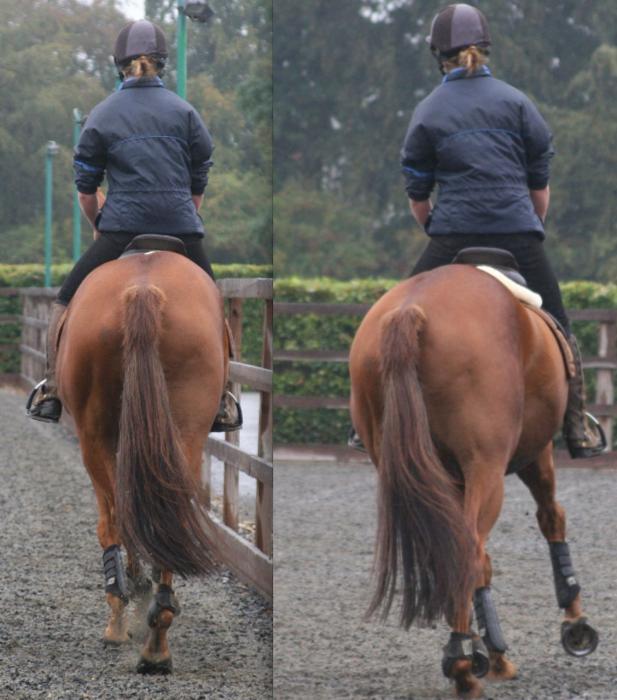
The relationship between hindlimb lameness and saddle slip
Saddle slip can occur for a variety of reasons, such as an ill fitting saddle, crooked rider, asymmetry in the thoracolumbar area (area of the horseback under the saddle) and also because of lameness. This article aims to investigate the relationship between saddle slip and hindlimb lameness, and quantify the frequency of saddle slip in horses with hindlimb lameness as compared to other horses.
One hundred and twenty-eight horses were prospectively tested, and their thoracolumbar shape and saddle were also assessed and categorised. The horses were divided in 5 categories: hindlimb lameness, forelimb lameness, both hind- and forelimb lameness, horses with thoracolumbar problems, and sound horses. The horses were evaluated when ridden by the owner and at least one other experienced rider. Lameness and saddle slip were assigned a grade before and after diagnostic analgesia.
The results show that saddle consistently slipped to one side in 54% of horses with hindlimb lameness, compared to only 4% of horses with forelimb lameness, and 0% in horses with back pain or sound horses. It was also found that in 86% the saddle consistently slipped to the side of the lame hindlimb. Furthermore, no horses with saddle slip had significant asymmetry in the thoracolumbar region. This shows that hindlimb lameness is a significant factor in inducing saddle slip.
Expert opinion by Els Smet
Saddle slip was eliminated in 97% of the horses when using diagnostic analgesia, showing a clear causal relationship. Even subtle hindlimb lameness increased the incidence of saddle slip, and so saddle slip may be used as an indicator for hindlimb lameness.
> From: Greve et al., Equine Vet J 45 (2013) 570-577. All rights reserved to Research Gate. Click here for the online summary.


